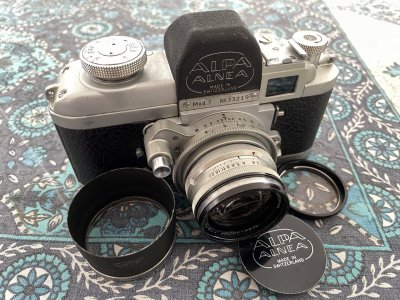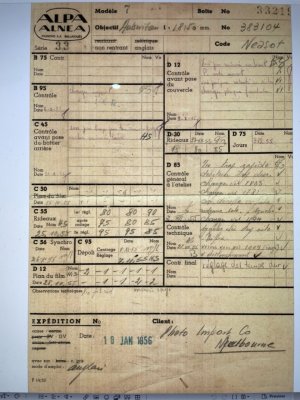Derek Leath
dl__images Instagram
Here are a few more images of one of the 11si models. This one has the black crinkle paint finish and is a tidy example in good working condition. The macro version of the Kern 50mm Switar (the later f/1.9 Macro-Switar is seen here) can rotate its focus ring approximately 2 & 2/3 turns from infinity to closest focus. As seen in some of the images it can still rotate a bit further towards the closest setting: it's not quite at minimum distance in these shots.
The depth of field indicator system may well be unique to these lenses? As the f stop is selected, small brass or copper strips progressively appear, or disappear, beneath a series of small holes drilled through the lens barrel to indicate the current aperture. You can see the two gold-coloured indicators for the maximum f/1.9 opening that is selected, clearly visible in the fifth image, as opposed to the adjacent holes for the smaller apertures. From memory, I believe ALPA called this DOF scale "Visifocus".
It's very impressive to adjust the aperture ring and see the dots change colour as the f stop is decreased or increased, but I doubt it's really as usable as a conventional DOF scale. And, whilst I'm not easily frightened by working on fairly complex cameras or lenses, I do confess that, the complexity of the Visifocus scale, together with its exceptionally long travel helical, would make prospect of having to strip down a Macro-Switar fully, rather frightening!
The chrome rotating switch with black arrow visible at the end of the lug on the lens mount that houses the release plunger is an auto/manual aperture control. It's essential to set this if a self timer exposure is being made unless the lens is being shot wide open. Finger pressure on the release plunger is what actuates the stop down system, akin to some Exakta SLRs. But without a finger on the plunger, the timer will not close the aperture automatically at the moment of exposure, hence, it has to be manually locked down via the switch.
The chrome sliding release switch on the body near the body release may be set to lock the release system, in which case, depth of field and or light metering (it's a stop down metering system) can be checked simply by pushing the lens plunger down without fear of inadvertently firing the shutter in the process. It has three positions and can also be set to stop down and meter, before slight additional pressure will then trip the shutter.
If the Macro-Switar is used on an older ALPA body without a body release slider lock, rotating the lens aperture switch, as well as facilitating correct timer exposures, will also enable the depth of field to be checked without firing the shutter, if desired.
Many lenses made in the larger ALPA bayonet used from the 4 onwards have a clip system for fitting filters or lens hoods. Filters click into a groove at the front of the lens using a spring circlip on their rear mating flange as do lens caps. Lens hoods have a stronger clip that has to be depressed by thumb and finger to retract it out of the way before the mount will clear the lens. This makes it impossible for a hood to fall off accidentally as whilst it will rotate freely around the lens, it is positively locked into the groove and will not remove unless the clip is manually depressed. It's so simple and effective one wonders why more manufacturers didn't use it. Perhaps it cost more to make? As a bonus many lens hoods can be reversed onto the lens and clipped securely around the barrel for easier stowage and lens protection. See the final image of the 11si in its original packaging as a case in point.
Like certain Rollei 35 models no external battery hatch mars the appearance of the 11si. On the bottom of the body casting on the rewind side, a small sliding cover complete with sticker advising the original battery specification may be slid across to permit battery installation or replacement. It's visible in the image with the back removed from the body just to the left of the film gate.
Unusually for any camera that's not a Zeiss Ikon or an Exakta, the take up spool can actually be completely removed from the body if desired. It's not permanently installed into the body, as it's retained in place by a simple leaf spring underneath it. This may be gently extended enough to slide the spool out of engagement with its drive lugs in the socket at the top of the wind side housing. But why? Unlike a Contax or Exakta the ALPA design doesn't lend itself easily to cassette to cassette loading. Perhaps it facilitates the use of a bulk film magazine, or permits the leader to be attached to the spool prior to inserting the cassette? Certainly, I had no trouble loading the 11si with spool in its proper place though as a regular Contax shooter, juggling camera back and body whilst inserting leader and cassette comes easily. It is just the way ALPA made them. Personally I'm not inclined to criticise this peculiarity, because I will need to dismantle an ALPA 7 at some stage, and, it is certainly going to make it that much easier to dismantle that part of the camera, than a typical take up spool installation...
Harking back to 1960s design cues, a top deck light meter readout is included underneath the accessory shoe, of all places. The small lever at rear covers or exposes a little window inside which the three illuminated lights for "Under" (Red), "Correct" (Green), or "Over" (Yellow) visible within the main viewfinder are duplicated, in order to permit metering without the camera to one's eyea potentially very useful feature for tripod photographyparticularly for those of us with bad necks like myself, who finds hunching down to peer though a low eye level finder a real chore at the best of times.
All this is made foolproof by Alpa's innovative third meter cell, that is included specifically to detect any light entering via the viewfinder eyepiece, and subtract it from the total light received through the lens by the more conventional pair of cells mounted on the prism. So simple, and so effective. If only the camera also featured open aperture metering, as well! And, should you be wondering, here, if an 11si is a scandalously expensive (no 35mm camera of its time, was more expensive on the UK market than the 11si according to photographic author and former Alpa dealer, Ivor Matanle) and eccentric confection of sensational build quality, highly innovative, and downright archaic design featuresyou'd be absolutely right.
Near the rewind knob (which, incidentally, extends upwards and outwards on twin struts, to promote rapid rewinding) there is a small plate, typically finished in silver or gold, on which the letters "K.M." are immaculately engraved. These are the initials of the original owner of this Alpa 11si. Pignons would (at a price) make you an Alpa to your precise specificationseven to the extent of supplying non-standard format sizes such as extra-long film gate, or shorter than 36mm length or other variations. As late as the 1970s they were still prepared to (and did) manufacture long obsolete models such as the Alnea 7 first introduced in the early to mid 1950s on special request. Engraving the fortunate buyer's initials onto that small plate attached to the top of their flagship model was no doubt a reflection of the pride they took in making it as much as the owner's pride of having such a rare and exclusive model.
There are many more unusual details that make photography with an ALPA 11si no better or (perhaps) worse than with more prosaic cameras, but, without doubt, different, to almost any other make.
Cheers,
Brett
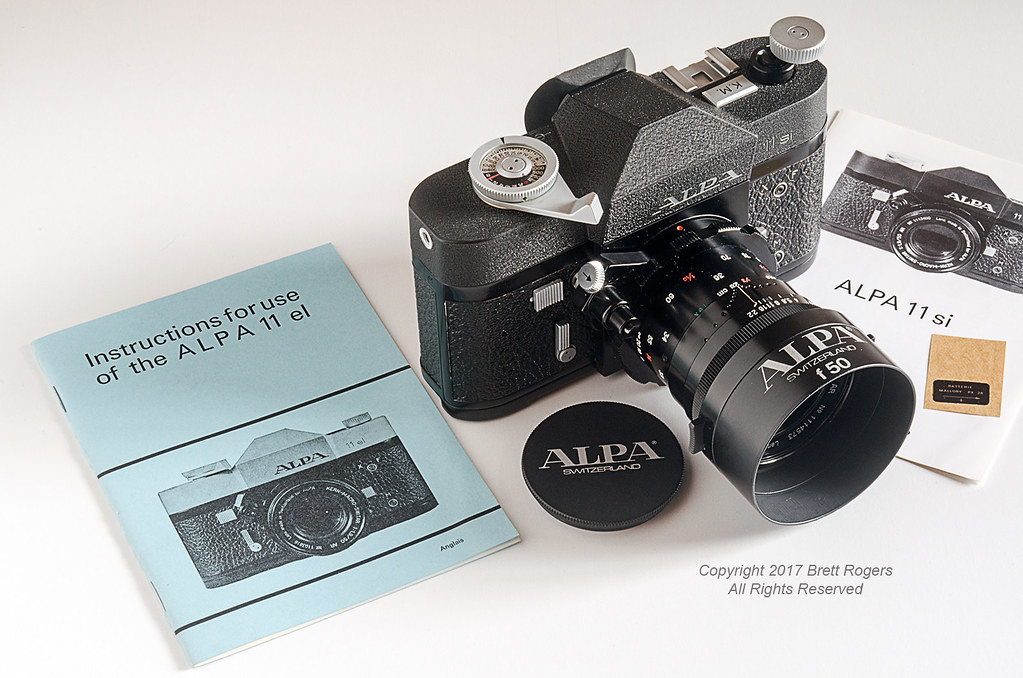

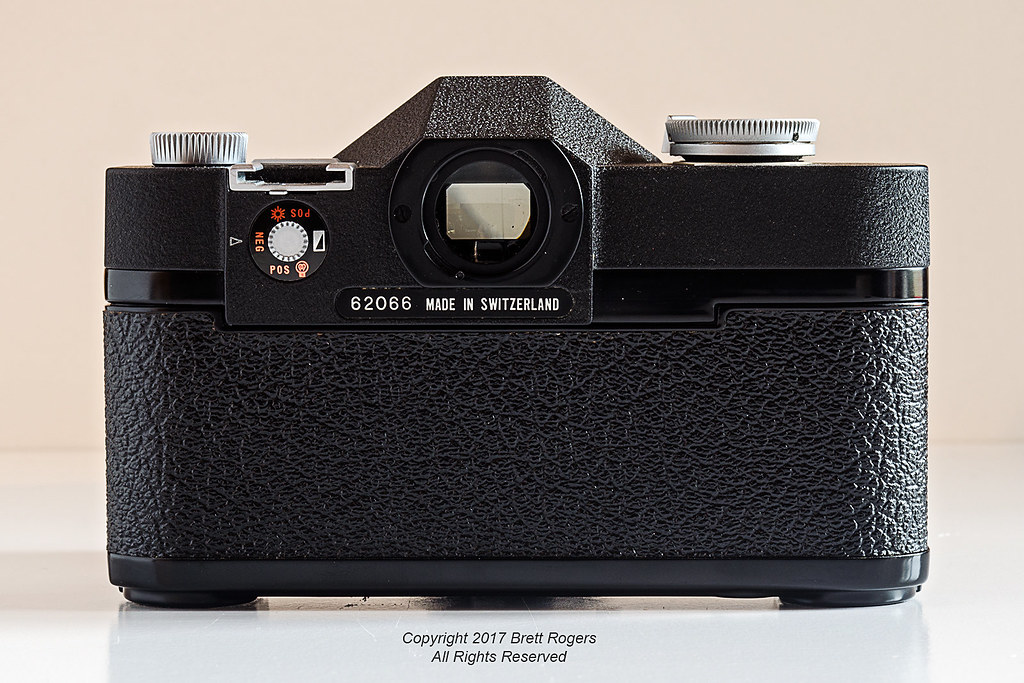

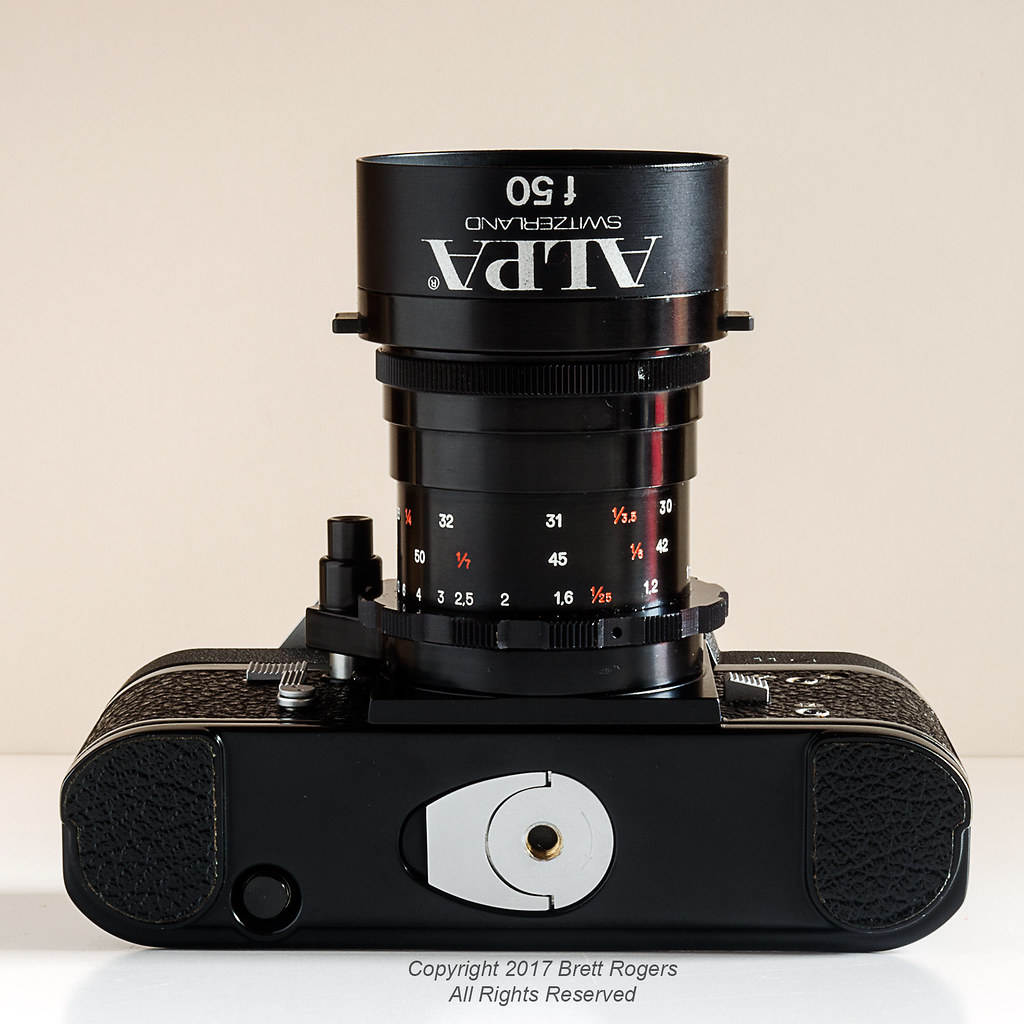

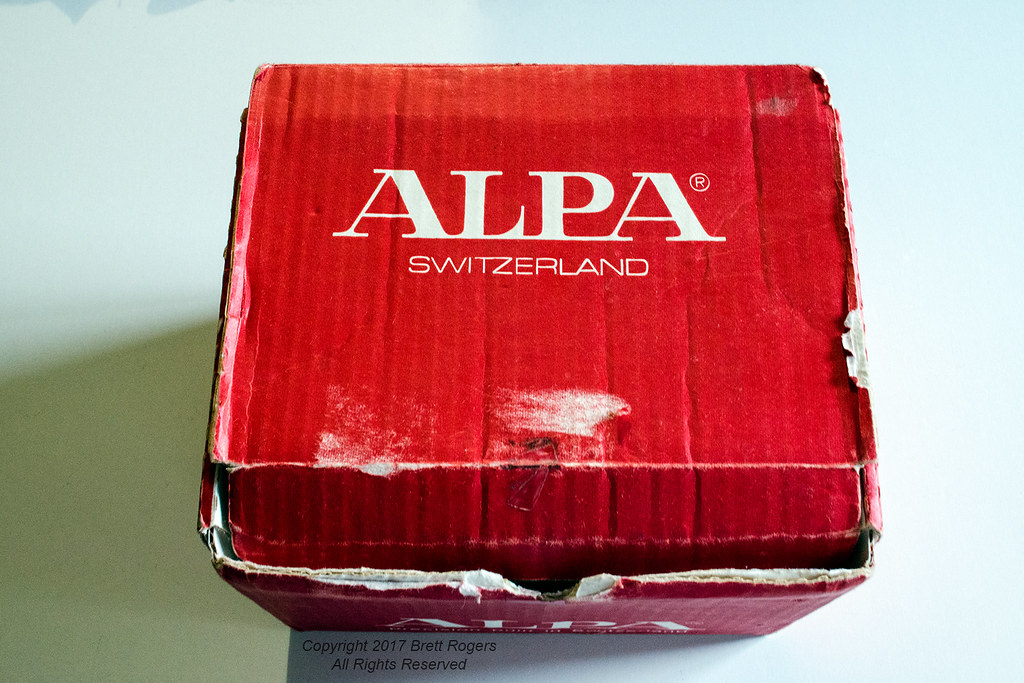
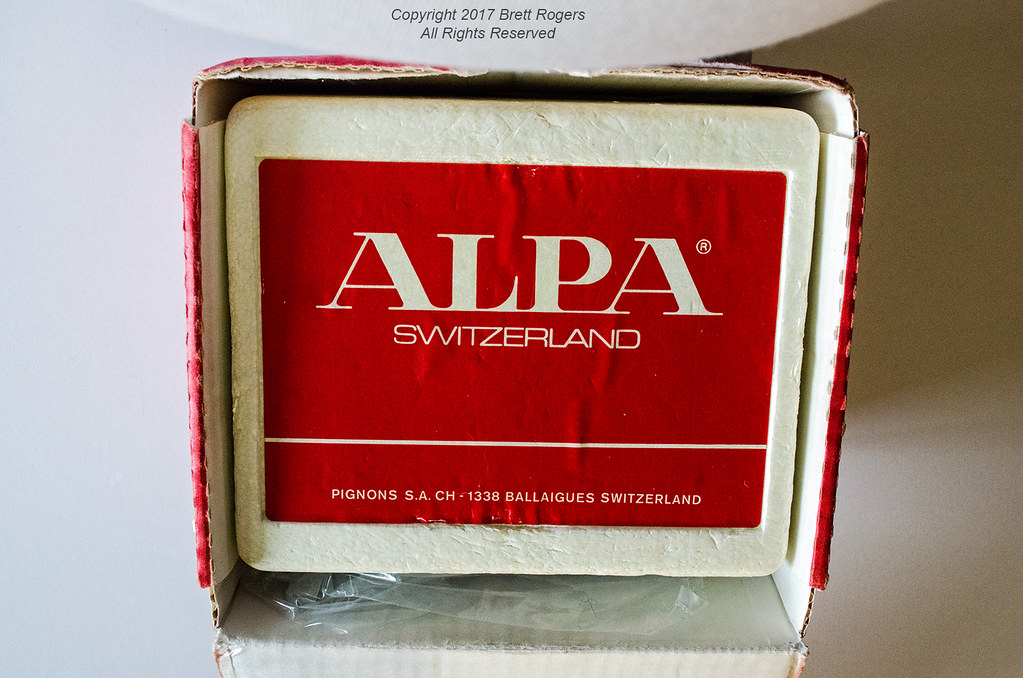
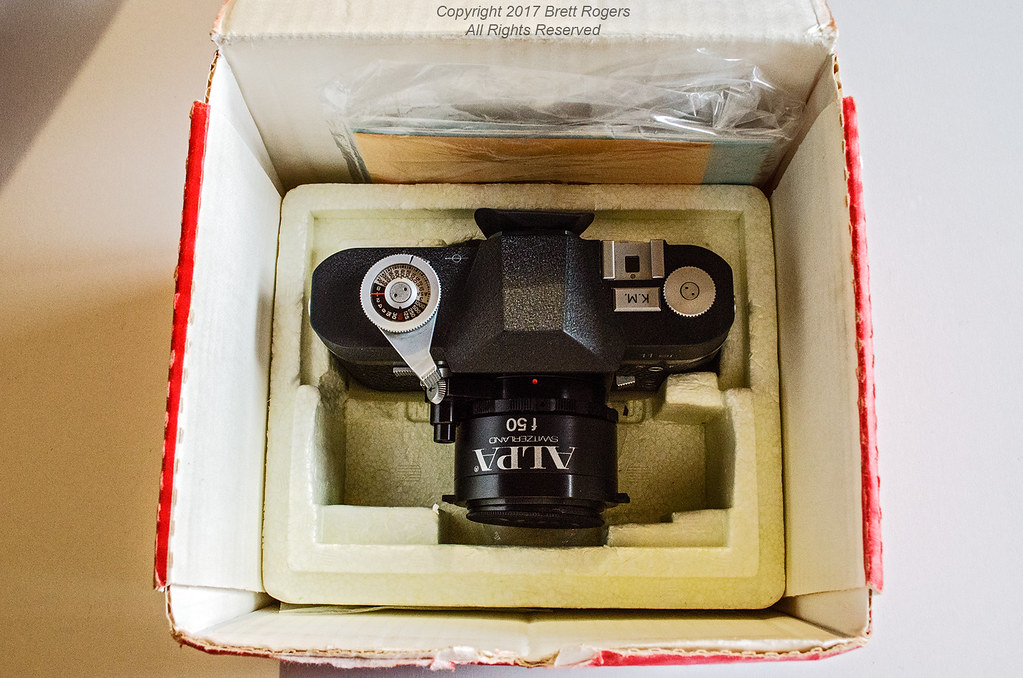
What a beautiful camera. Really is impressive.















